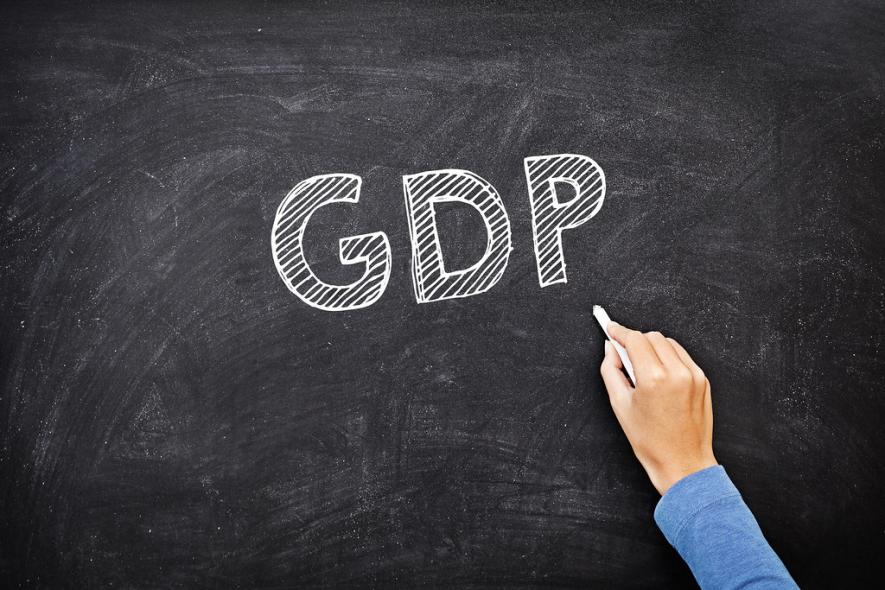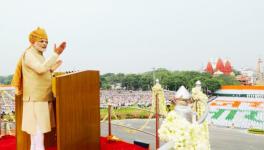Multilateral Banks Debunk Govt Claims On India’s Growth Rate

Image Courtesy: Flickr
Global financial bodies have slashed their economic forecast for India in recent weeks, countering government claims of recovery and growth since the pandemic struck the world in 2019-20. The Finance Ministry had last month said the Indian economy would grow at a 7% rate in Fiscal 2023 while retail inflation would moderate gradually.
The Ministry’s Monthly Economic Review had claimed that the economy would gain from high service exports and a fall in import-intensive consumption demand, like fuel. However, this dreamy picture is not being supported by world financial bodies like the World Bank and the IMF. Even the United Nations Conference on Trade and Development (UNCTAD) has painted a dismal picture of the future of the Indian economy over the next few years.
The data exposed the Modi government’s claims that the IMF had projected India’s growth rate at 5.9% ahead of China’s 5.2%. In fiscal 2021, India’s growth rate was 9.1% in fiscal 2021, which stood against the base of a negative growth rate of 5.8(-5.8)% in 2020, as the Indian economy was among the worst hit nations by the Covid pandemic. On the other hand, during the same period, China had grown at a modest (positive) rate averaging over 4%. So, if India’s growth rate is compared with the base existing during the pre-Covid year, the actual rate comes to a mere 3.8%.
Significantly, the IMF data also showed that India had the lowest per capita income amongst all large economies. Even with the fifth largest GDP in the world, India’s per capita income was shamefully lower than that of Angola and Ivory Coast. The UNCTAD’s report, released on April 12, categorically said, “The stark rise in already high poverty rates has not abated yet”.
This report projected that India’s economic growth would decline to 6% in 2023 from 6.6% in 2022. It projected that the rate of growth of the Indian economy would decelerate primarily due to the country’s strong dependence on extra-regional fossil fuel imports. These massive import bills would keep the region vulnerable to global inflationary pressures, which may trigger further monetary tightening, while public spending may be curtailed, the Trade and Development Report of the United Nations Conference on Trade and Development (UNCTAD) said.
The report, drawing a dreary depiction of the status of the Indian financial system, said that while the country registered a 6.6% growth rate in 2022, the positive effect was partly offset by higher energy import bills. The burden of the import bills deepened the current account deficit and ate up the reserves. It acknowledged that the Reserve Bank of India (RBI) has started tightening its policy stance since Spring 2022 to limit the damage caused by high foreign capital outflows, a weakening currency, and inflationary risks.
“Higher financing cost slightly dented buoyant economic activity, and over-leveraging in the corporate sector may become a factor of financial instability,” the UNCTAD warned in its report. It said that in 2020 and 2021, the Indian government had committed a stupendous amount of funds, as high as USD 160 billion, to fossil and non-fossil projects. But the current government spending has been weakening, even though export orders remain on the rise post-Covid. Hence the UNCTAD report has projected that India’s GDP growth would decelerate to 6% in 2023. These projections put a question mark on the government's claims regarding India‘s growth path.
Regarding the neighbouring countries, the UNCTAD report said Pakistan might register a rebound as it progressively recovers from the devastating floods of 2022, which generated loss and damage amounting to an estimated 8% of its GDP. Sri Lanka and Bangladesh, which are highly-indebted economies, would keep facing pressures from external creditors to cut public spending and cancel social, productive and climate adaptation investments crucial for these two nations.
The UNCTAD report estimated that 81 developing countries, excluding China, had lost USD 241 billion in international reserves in 2022. That was an average fall of 7%. Over 20 countries experienced a drop of over 10% and, in many cases, exhausted their Special Drawing Rights (SDRs) payable to the International Monetary Fund.
Similarly, in its latest India Development Update, the World Bank said real GDP growth was expected to slow down from 6.9% in 2022-23 to 6.3% in 2023-24 due to slower consumption growth. “The lagged impact of monetary policy tightening, heightened growth uncertainty, and reduced current spending of the government are expected to constrain domestic demand in India in 2023-24,” it said in the same tone and tenor of the reports of the IMF and UNCTAD.
The Asian Development Bank’s ‘Asian Development Outlook’ said, “Any worsening of geopolitical tensions is likely to exert further downward pressure on global demand and increase uncertainty, tamping down India’s growth rate and pushing up inflation.” It went on to further warn that “domestically, weather shocks to agricultural production, including abnormal rainfall or high temperatures, could spur food inflation, thereby putting further pressure on the central bank to raise interest rates.” The ADB said the growth in import of goods and services “is expected to slow as commodity prices moderate… With rising global uncertainty and interest rates, foreign direct investment and portfolio inflow are likely to remain weak in 2023-24 before picking up slightly in 2024-25.”
Hence, the combined impact of higher interest rates, high energy costs and food prices would further weaken household spending and enhance poverty in the developing world, including in India. Business investments, buffeted by the ongoing financial turbulence, would slow down growth and have a “devastating effect” on the welfare of the people in the developing world. This will deepen the cost-of-living crisis faced by the people in countries like India and magnify inequalities worldwide, completely disproving the Narendra Modi government’s claims of a high growth trajectory for India.
The so-called theory of trickle-down effect projected by the government (high prosperity of the rich flows down to enhance the poor’s economic welfare) has been debunked by the data on the growing gap between the rich and the poor (or economic inequality) in the country, rising poverty, unemployment and the perpetually rising prices. The recently-published Human Development Index of the United Nations Development Programme (UNDP) also puts India on a scale lower than that of Bangladesh, Bhutan, and even tiny nations such as Tuvalu and Marshall Islands.
The writer has extensively covered internal security, defence and civil aviation for the Press Trust of India for three decades. Views are personal.
Get the latest reports & analysis with people's perspective on Protests, movements & deep analytical videos, discussions of the current affairs in your Telegram app. Subscribe to NewsClick's Telegram channel & get Real-Time updates on stories, as they get published on our website.
























